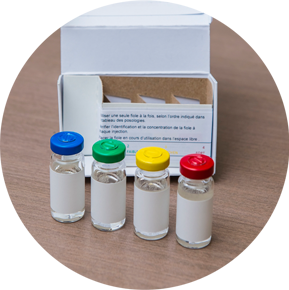What is oral allergy syndrome?
Oral allergy syndrome, or pollen-food syndrome, is an allergic reaction that occurs when a person experiences nasal allergy or hay fever symptoms while eating nuts or fresh fruits or vegetables. These symptoms usually affect only the mouth and throat.
This syndrome is caused by the structure of the proteins that trigger these allergy symptoms. Some labile proteins in raw fruits and vegetables are very similar to those in pollen. The most common combinations are listed below.
CROSS-REACTIONS BETWEEN POLLEN AND FOOD
Pollen |
Food |
Birch |
Apples, peaches, plums, pears, apricots, celery, carrots, almonds, peanuts, hazelnuts |
Ragweed |
Bananas, cantaloupe, watermelon, honeydew, cucumbers, squash |
Mugwort |
Celery |
The allergens that cause oral allergy syndrome are heat-sensitive proteins. That means a person with this syndrome could potentially experience allergy symptoms while eating an apple but not when having a slice of apple pie.
About 10% of people will experience localized symptoms in the mouth and throat. The risk of anaphylaxis is believed to be around 1.7%. Anyone who thinks they may have oral allergy syndrome should have cutaneous scarification testing done to pinpoint what foods they are allergic to. Though the risk of anaphylaxis is very low, it is difficult to predict how severe an allergic reaction may be. That is why it’s best for these people to avoid the fresh fruits and vegetables that trigger symptoms.
If allergic to |
Risk of reaction to |
Risk |
Birch |
Apples, peaches, honeydew |
55% |
Ragweed |
Bananas, cantaloupe, honeydew |
55% |
Mugwort |
Celery |
55% |
Peanuts |
Green peas, lentils, beans |
5% |
Seafood (e.g., shrimp) |
Other seafood (e.g., lobster, crab) |
75% |
Cow’s milk |
Goat’s milk |
92% |
Whole grains (e.g., wheat) |
Other whole grains (e.g., rye, barley) |
20% |
Nuts (e.g., walnuts) |
Other nuts (e.g., cashews, hazelnuts) |
37% |
Peaches |
Apples, cherries, pears, plums |
55% |
Bananas, kiwis, avocado |
Latex |
11% |
Latex |
Bananas, kiwis, avocado |
35% |
RISK OF HAVING AN ALLERGIC REACTION TO A FOOD BASED ON DIFFERENT FACTORS
Source: Sicherer, SH. “Clinical implication of cross-reactive food allergens.” Clinical Journal of Allergy and Immunotherapy, 2001; 108(6)881-90


















